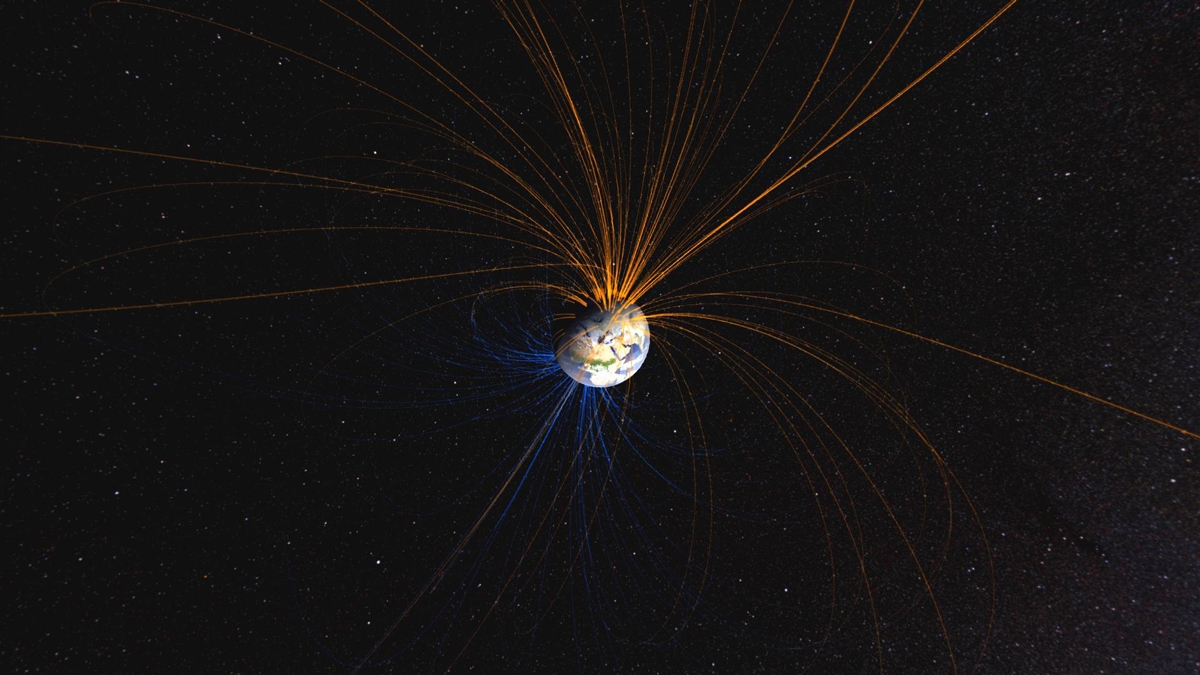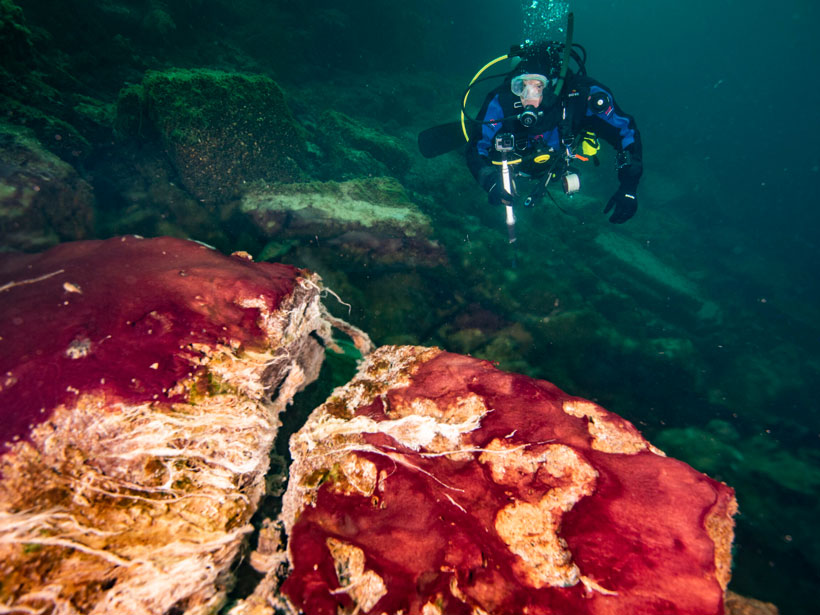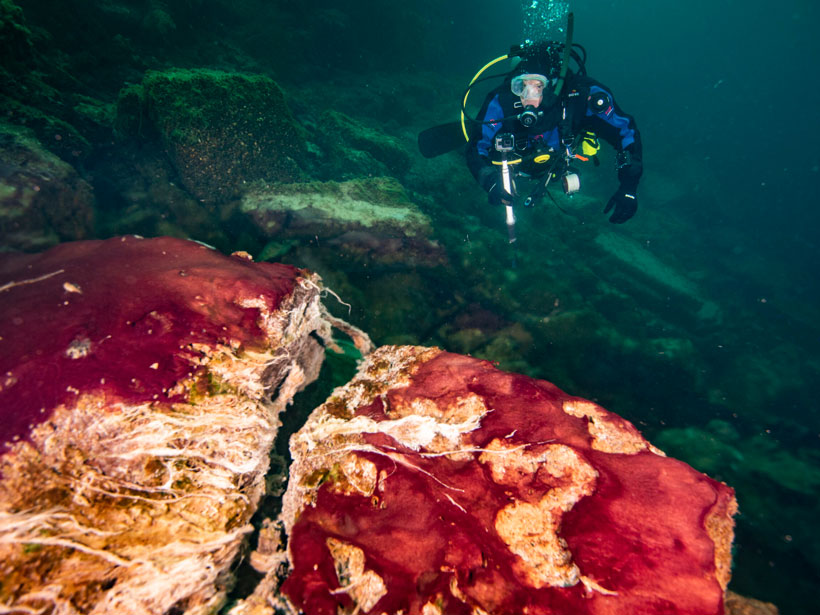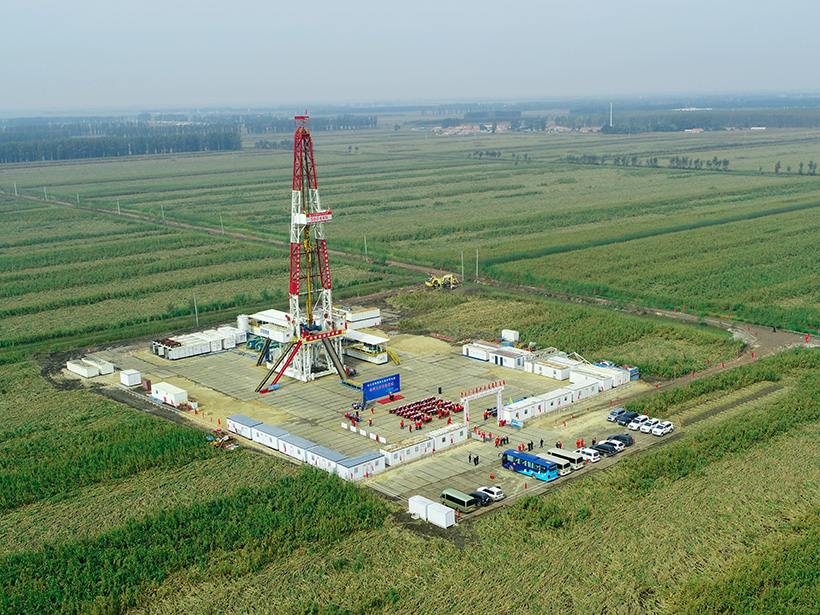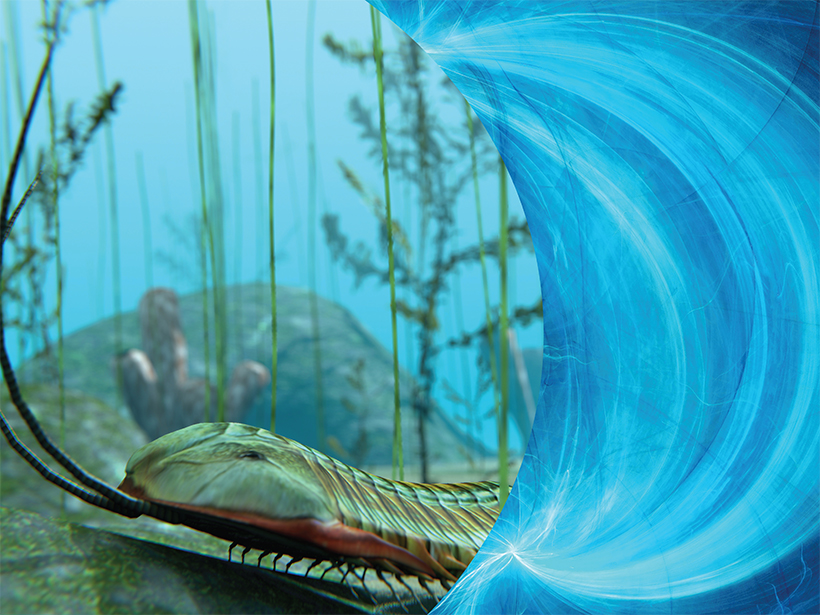Tidal heating may have raised the surface temperature of early Earth and triggered global volcanism, a new study says.
early Earth
Oldest Pole Reversal Shows Early Earth Was Well Suited for Life
Australian rocks 3.25 billion years old preserved the oldest signs of Earth’s stable magnetic field and quickly moving crust, critical elements of life’s evolution.
Extinct Style of Plate Tectonics Explains Early Earth’s Flat Mountains
The geologic record suggests that despite Earth’s hot, thin crust during the Proterozoic, mountains were still able to form thanks to an extinct style of crustal deformation.
Días más largos probablemente incrementaron el oxígeno temprano de la Tierra
Tapetes microbianos en el sumidero del Lago Huron, combinado con modelado, sugiere que el cambio en duración del día de la Tierra podría haber jugado un rol principal en la oxigenación de la atmósfera.
Longer Days Likely Boosted Earth’s Early Oxygen
Microbial mats in a Lake Huron sinkhole, combined with modeling work, suggest that the changing length of Earth’s day could have played a key role in oxygenating the atmosphere.
An Unbroken Record of Climate During the Age of Dinosaurs
A scientific drilling project in China has retrieved a continuous history of conditions from Earth’s most recent “greenhouse” period that may offer insights about future climate scenarios.
Communicating Earth’s Deep Past: A Q&A with Andrew Knoll
The Earth historian’s new book illustrates the long and winding road that brought our planet into the current moment of global change.
Watering Down the Mantle
The cooling of planet Earth over time increased the water carrying capacity of the mantle and could have shrunk the oceans.
Half of Earth’s Nitrogen May Be Homegrown
A new analysis of iron meteorites reveals a distinct isotopic signature that suggests nitrogen was present around early Earth.
Habitability and the Evolution of Life Under Our Magnetic Shield
Earth’s global magnetic field likely dates back billions of years and is a barrier against cosmic radiation. What roles has it played in the planet’s biosphere?


